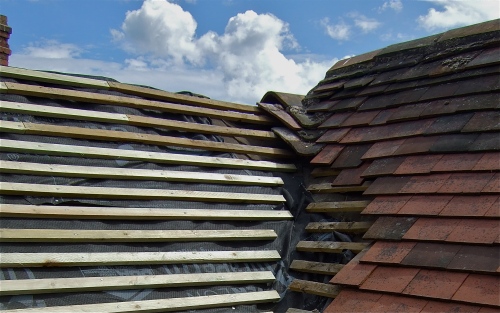As an apprentice, Stox had ignored the ladders one day and climbed instead the steel reinforcing bands of a l50-foot incinerator chimney on a waste tip near Birmingham. “It was quicker,” he claimed; but really he had done it out of mischief, and a desire to stir up his elders. The other jacks, he said, had been “well surprised”; but generally they would admit to no interest in rock climbing, and seemed unimpressed by his photographs of routes like London Wall and Coventry Street.
Stox phoned me at seven in the morning on Christmas Eve and asked me if I’d like to see what jacking was all about. I’d known him for a fortnight. I was so flattered and surprised I could only answer “Yes.”
If this seemed brusque he didn’t say so.
“I’ll pick you up in half an hour.”
He turned up ten minutes later, in a bruised Transit van belonging to his firm. Inside, it smelled of oil, Swarfega and old polypropylene rope. Stox drove impatiently. He was unforgiving of other drivers. But compared to Normal, whose wild lunges, sudden U-turns and lapses of concentration or memory were legend, he seemed quite safe.
“Ever watch stock car racing ? Well exciting!”
Stox’s contract was at a steelworks near Rotherham. Another team had been in the day before to prepare it for him. His brief was to do a Sonartest and make recommendations. I sat in the Transit for half an hour, reading a three-day-old copy of the Sun, while he went from Portacabin to Portacabin looking for the site engineer, a thin Sheffield man who took him by the arm, pointed silently at a smallish stack made of riveted steel cylinders, brick-lined, supported at the base by four vanes so that it looked like an abandoned rocket from some old-fashioned war, and promised, “You’ll do nowt wi’ that.”
It was crawling with rust even at ground level. We found five sixteen-foot wooden ladders in situ, tied on at intervals with steel cable. There was a pulley-block in place.
“Are your ropes always this frayed ?” I asked.
Stox smiled distantly, and in the faint but authoritative tones of Harry Dean Stanton in Repo Man answered: “Steeplejack always seeks out intense situations. It’s part of his code.”
“Piss off, Stox.”
About sixty feet above the ground was a batten-stage, eight planks and a few bits of scaffolding fixed to the stack with cleats, through which it was easy enough to see the ground. It was bitterly cold up there. In winter, climbers try to pick a sheltered crag: here, with three-hundred and sixty degrees of air around us, there was nothing between us and the wind. “I couldn’t work up here,” I said, looking out over British Steel. The skin at the back of my neck crawled. “Not for money. What do you want me to do?”
“You can admire the view.”
Parts of the works were being demolished prior to privatisation. For as far as I could see, cutting torches fizzed and flared and sent up showers of sparks from among the buckled girders. Heaps of waste smouldered in the mud between the huge corrugated sheds, giving off an acrid, low-lying smoke through which I could make out gantries crawling with oxygen pipes; muddy yards where the Mercedes, Volvo and Magirus Deutz trucks were parked in rows; the venous curves of a disused railway line–a bright, almost luminous green moss grew between its dull rails. As we walked past the shed now directly below us, I had seen what I thought were huge steel wheels piled on top of one another. They were already beginning to rust. This reminded me of how, at the turn of the Eighteenth Century, stone from France became cheaper than Hathersage grit. The grindstone industry collapsed, and work stopped in a day. Half-finished millstones are still scattered around at the base of the Peak District edges, for tourists to eat their lunch off.
After a moment or two, a man strolled into view through the smoke, pushed his goggles up on to his forehead, and pissed against the side of a huge tank of brownish liquid.
“Very nice,” said Stox.
He held the Sonartest against his ear and shook it.
“This thing’s a bit Mickey Mouse today. You’re supposed to be able to calibrate it against the samples. Still, it’ll have to do.”
There was about twenty feet of the stack left above us. Stox smeared some vaseline over the Sonartest pick-up and set off from the batten-stage, ignoring the ladders in a display of pure technical cheek, climbing on bolt-heads, rivets, things I couldn’t see, moving up and down with an intent grace while he passed the pick-up over the surface like a doctor’s stethoscope and called down the thicknesses– “2.98…3.77…There’s supposed to be four millimetres even, up here…2.01! Site engineer’s not daft….3.12….l.80!….” The pick-up left little green patches of Vaseline wherever it went. Brittle flakes showered down on me as Stox scraped the rust away to get a better contact. “Wait a minute,” he told himself, “if you–” He swung out lazily and delicately in that characteristic posture of a climber assessing the next few feet, legs straight, heels down, head tilted up intelligently. “Got it. 2.88.” By the time he’d finished we were both freezing.
“Time for some nosh,” said Stox.
As I was about to leave the batten-stage he stood in my way and stared at me intently. “I land the soft jobs,” he said, “the jobs like this, because I got a CSE. Do you see ?”
From Climbers, 1989.




